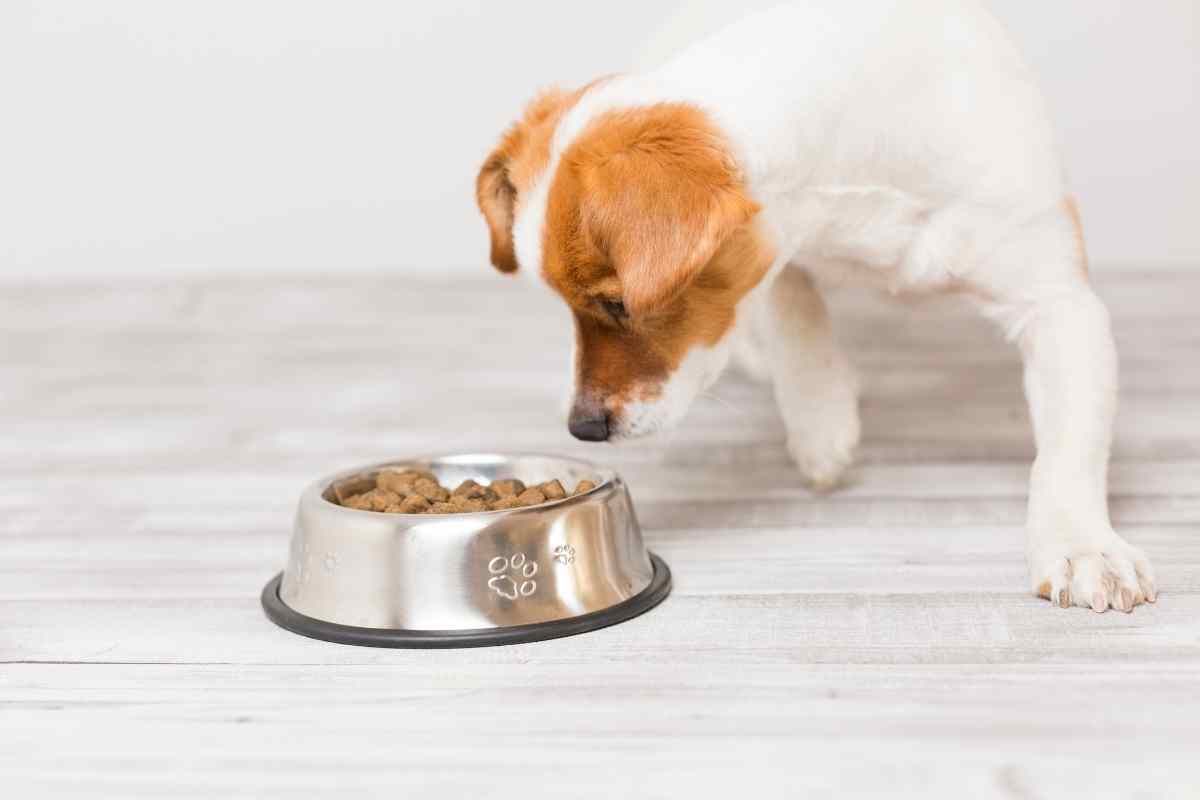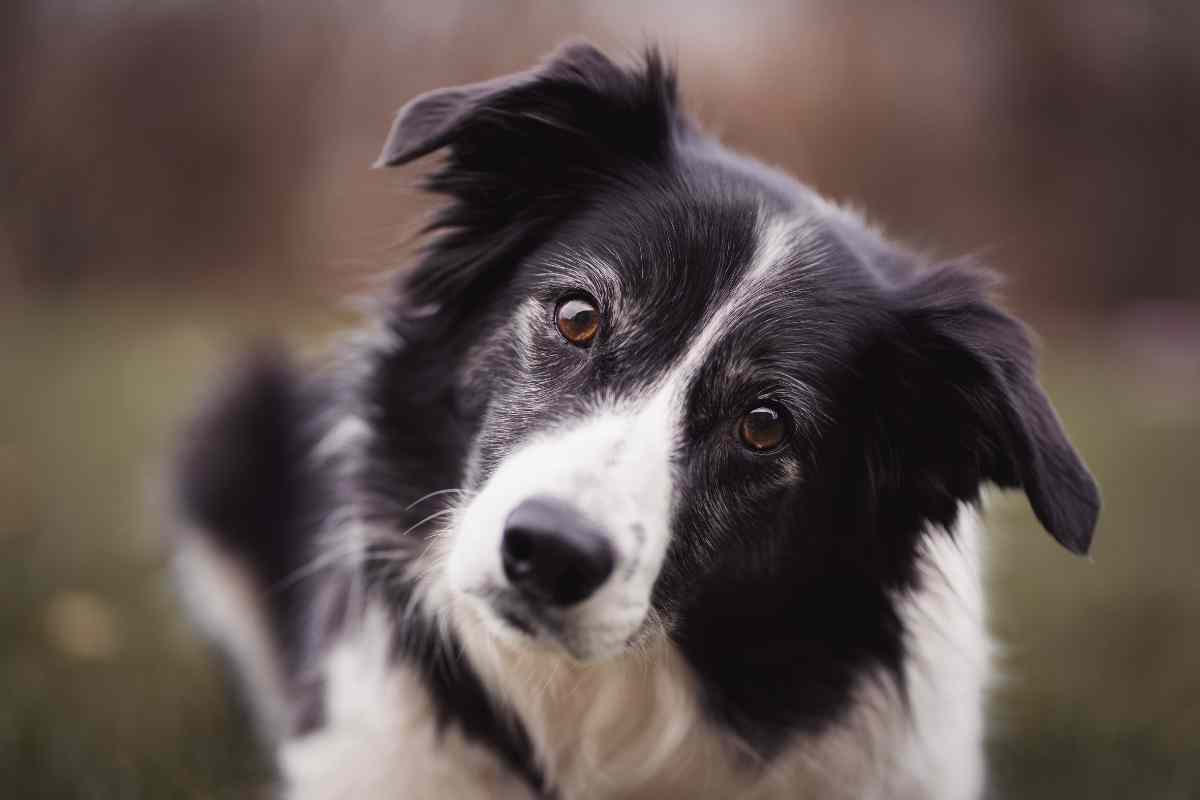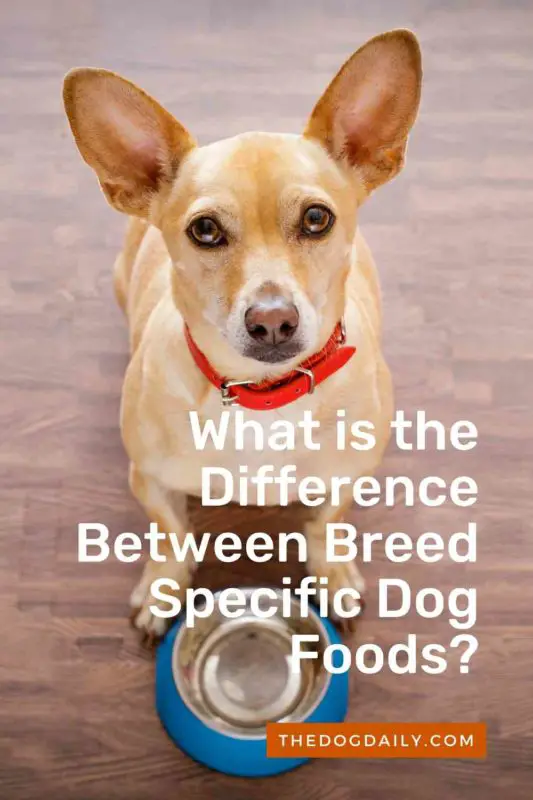Is Breed Specific Dog Food Necessary?
With such various offerings in the pet food aisle, selecting the right food for your dog can feel complicated. Health issues and life stages may take precedence, but feeding according to breed-specific needs is also an important consideration, especially for healthy adult dogs.
When George Kantor took his Pug Sadie to his mother’s country home for the holidays, the New York City psychologist forgot to bring his diminutive dog’s small-breed kibble. It was Christmas Eve, and the stores were closed, so he fed Sadie from the food bag of his mother’s standard poodle. “If you know pugs, they never turn down a meal, and Sadie is no exception,” says Kantor. But the pug’s holiday meal soon turned sour.
“She seemed to be having a hard time with the bigger pieces,” he explains. Unfortunately, the kibble didn’t stay down, leaving Kantor with a most unwanted “gift” to clean up. He surmises, “I guess she wasn’t able to chew the large chunks quickly enough.” Kibble size isn’t the only reason to feed your best friend food specific to breed size. Appropriate nutrient levels also vary based on whether your dog is small, medium, large, or giant.
Your dog’s weight at maturity determines its breed size, whether your pet is a giant purebred or a tiny mixed breed. A giant-breed dog may reach 90 pounds or more at maturity, while a large breed will grow anywhere from 51 to 90 pounds. A small/toy dog will weigh up to 20 pounds as an adult. Any furry friend between (21 to 50 pounds) is a medium-sized dog.
Below, veterinarians Trisha Joyce, DVM, of New York City Veterinary Specialists, and Katy J. Nelson, DVM, a Virginia-based emergency veterinarian, weigh in on the importance of size-specific feeding.

Adult Nutritional Differences in Dogs
Post-growth, different breeds still have different needs. “Caloric needs vary based on breed size,” says Dr Joyce. Small and toy breeds have higher metabolic rates (more than twice those of large breeds)and smaller stomachs. They, therefore, function best on energy-dense diets and small meals. Small-breed formulas have more calories per cup than medium- and large-breed foods, making an energy-packed diet most appropriate.
Large and jumbo dogs have special nutritional considerations, mostly related to joint health issues. “In adulthood, larger dogs are prone to orthopedic problems and arthritis, so you may want to select foods that have protective substances for their joints, like glucosamine,” says Dr Joyce. Supplements such as glucosamine and chondroitin, which are sometimes included in commercial dog chows, are thought to maintain your oversized pet’s cartilage.
Your Dog in Maturity
“The rate at which a dog ages depends on the breed,” explains Dr. Joyce. The larger and heavier the dog, the earlier the aging process begins. A large or jumbo dog should then start eating a “maturity” diet earlier than a small or toy dog. Larger breeds tend to have shorter life spans, so they might be considered seniors as early as six-years-old, while smaller dogs don’t generally reach senior status until ten years. Check with your veterinarian if you’re not sure when to start a mature diet.
The nutritional makeup of all senior diets should include immune-system-supporting antioxidants like vitamin E and beta-carotene. But such diets also vary by breed size. Large and jumbo dogs are still in need of nutritional support for their sensitive joints, so glucosamine should be on the ingredient list in your large or jumbo pet’s formula. Similarly, small dogs continue to need energy-dense food, and the calories per cup should be higher than for medium and large breeds.
As for Kantor and his Pug Sadie, they had to make do over Christmas. “I cut the kibble pieces in half before I fed her Christmas day!” he recalls laughing. “The next morning, the stores were open super early, and we were back to her small-breed kibble by breakfast.”

What is the Difference Between Toy Breed Dog Food and Regular?
Suppose your dog is a Chihuahua, Toy Poodle, Brussels Griffon, Maltese, Pekingese, Pomeranian, or Yorkshire Terrier or weighs 10 pounds or less. In that case, you could consider feeding him a toy-breed dog food formula.
“The vast majority of toy dogs are shaky and are always cold,” says Dr. Nelson. “They’re worked up all day long over nothing.” As with fidgety people, the constant movement of toy dogs means they burn energy all day long. They also have small stomachs that cannot hold significant portions, so they need an especially calorie-dense formula. Small dogs also tend to have poor dental health and may benefit from tartar-controlling dog foods, helping protect their teeth.
As there is a wide variety of toy dog foods on the market, check with your veterinarian to help you to find the right one for your dog. Follow the portion recommendations on the label and adjust accordingly if your dog does not maintain a healthy weight.
What is the Difference Between Small Breed Dog Food and Regular?
If your dog is a Jack Russell, Shih Tzu, Pug, Lhasa Apso, Cocker Spaniel, Border Terrier, French Bulldog, or Dachshund or weighs between 10 and 20 pounds, you could consider feeding him a small-breed formula.
In the commercial dog food world, toy and small formulas are often one and the same, and with good reason: “A lot of small dogs are also high in energy and low in stomach capacity. Plus, they need bite-sized kibble for their relatively small mouths,” says Dr. Nelson.
However, small dogs are more likely than toy dogs to become overweight. To ensure that toy- and small-dog formulas do not pack the pounds on your dog, small-dog owners need to be particularly attuned to portion control.
Finding the right dog food for your dog is a significant first step; ensuring they are fed correctly is the second. Follow the portion recommendations on the label and adjust accordingly if your dog does not maintain a healthy weight.
As there is a wide variety of dog foods on the market for small dogs, check with your veterinarian to help you to find the right one for your dog for whatever their life stage.

What Should I Feed My Mid-Sized Dog?
If your dog is a Schnauzer, Beagle, Border Collie, Basset Hound, Irish Terrier, Portuguese Water Dog, or Shar-Pei or weighs between 20 and 50 pounds, you could consider feeding him a standard adult dog food formula.
Mid Sized dogs are considered standard by the pet food industry, and their needs encompass the needs of most dogs: high-quality protein dog food to maintain muscle mass, fiber to promote intestinal health, fish oil for healthy skin and coat, carbohydrates for fuel and vitamins and minerals for proper immune function.
“These are middle-of-the-road dogs,” says Dr Nelson. “In adulthood, there’s not a lot separating their dietary needs from large breeds.” Such dogs do, however, reach what is considered old age more slowly than bigger dogs. Mid Sized canines can safely remain on “adult” instead of a “maturity” formula through to age 7.
As there is a wide variety of dog foods on the market for standard-sized dogs, check with your veterinarian to help you to find the right one for your dog for whatever their life stage.
What is the Difference Between Large Breed Dog Food and Regular?
Suppose your dog is a German Shepherd, Labrador Retriever, Golden Retriever, Pointer, Great Dane, Bullmastiff, Newfoundland, Rottweiler, or weighs over 50 pounds. In that case, you could consider feeding him a large or giant-breed dog food formula.
Post-puppy-hood, large and giant breeds have the same nutritional requirements and the same concerns. “They have a lot more joint issues compared to smaller dogs,” says Dr Nelson. Foods for these oversized dogs should contain glucosamine and chondroitin sulfate for joint health and antioxidants like vitamin A and vitamin E to slow the aging effects, which larger dogs do more quickly.
Finally, they also require fewer calories. Large-breed foods have less fat and calories per kibble because, except for hunting dogs, the dogs they’re targeted at tend to be less active. The L-carnitine in these formulas will help large and giant dogs to burn fat more efficiently.
Large dog breeds can be more susceptible to conditions such as Orthopedic Disease and Bloat. Feeding your large dog a formula specifically designed for large dogs made by
a reputable company can help avoid the onset of these conditions. Consult with your veterinarian for any recommendations and advice.
Finding the right dog food for your dog is a significant first step; ensuring they are fed correctly is the second. Follow the portion recommendations on the label and adjust accordingly if your dog does not maintain a healthy weight.
No matter your dog’s breed, feeding the right formula will help maintain its health and longevity, an objective that all dog lovers can agree on, regardless of their breed preferences.
Article written by Author: Darcy Lockman, and The Daily Dog Expert

